#eastern teaberry
Text

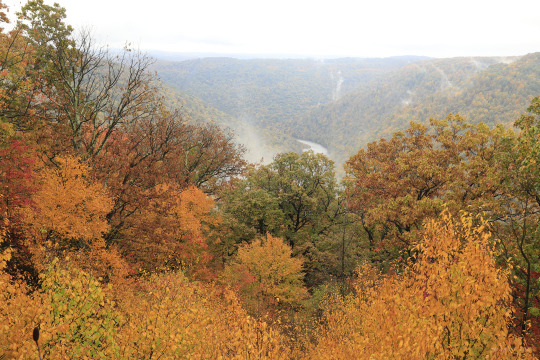
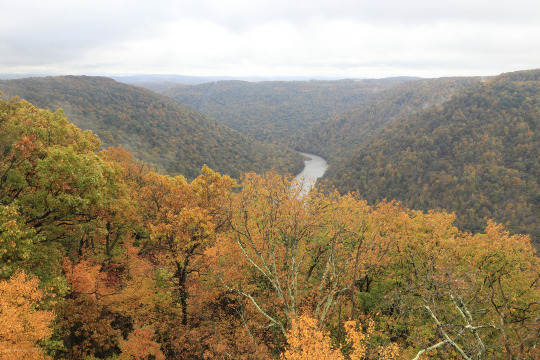




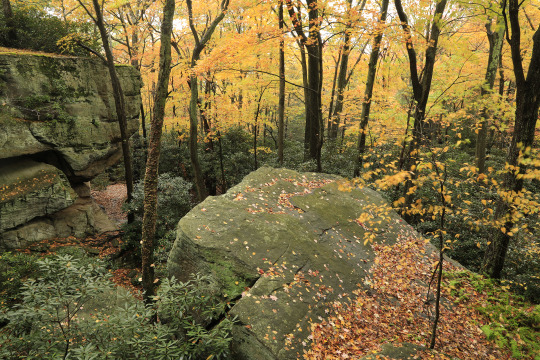


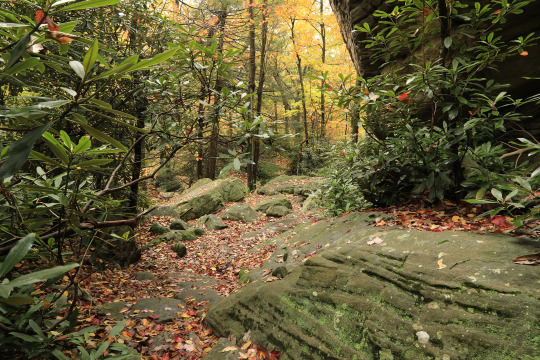


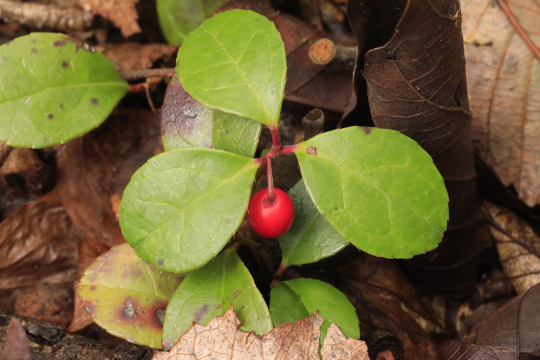
Damp, cool, and overcast are the prevailing themes of this year's fall season. But even on the darkest of days, nature's inner light cannot be denied. On days like this, as a photographer, I get the benefit of longer exposure shots, which make the colors of the fall forest all the more vivid, expressive, and moody. My early morning hike in Cheat River Canyon reminded me how mist, carotenoids, sandstone, and moss can cast a magical spell that brings joy even on the darkest days.
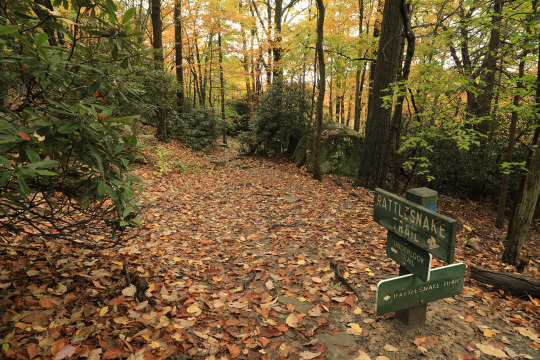
#appalachia#vandalia#west virginia#flora#fall#coopers rock state forest#cheat river canyon#cheat canyon#cheat river#allegheny mountains#chestnut ridge#leaf color#mist#eastern teaberry#connequenessing sandstone#moss
320 notes
·
View notes
Text
The Small Things Spreading Joy in November 2023

View On WordPress
#autumn leaves#bay berries#bird of prey#blush rose#crows#cyclamen#dogwood tree#eastern teaberry#firethorn pomes#forsythia#frost diamonds on blackberry leaves#geese flying#geese on a river bank#geese swimming#hedgerows of hips and haws#holly berries#hut on wheels#lightening struck tree#my photographs#norwegian maple#oak leaves#red admiral butterfly#red roses#sweet chestnut#umbrella fungi#yarrow flowers#yew
2 notes
·
View notes
Text
Prefix: Tea-
A red or white cat.

Description: Canada tea, also known as eastern teaberry and American wintergreen, is a small evergreen shrub that grows in the acidic soils of pine and oak forests. Its leaves are dark green and waxy with a distinctive minty scent, and the plant produces white or pink bell-shaped flowers during midsummer. The berries, which are bright red, ripen in the fall and persist through the winter, making these plants a valuable resource for herbivores such as chipmunks, squirrels, and landfowl during the colder months.
3 notes
·
View notes
Text
Eastern Teaberry
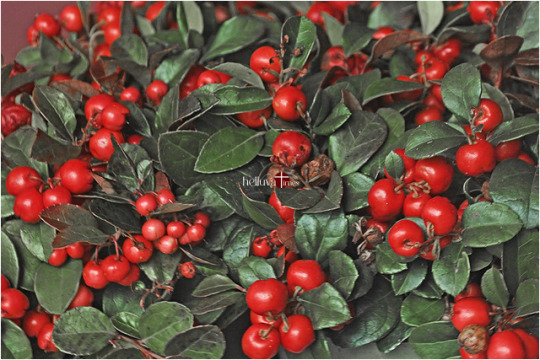
Gaultheria procumbens or Eastern Teaberry calling on the conservatory here. Photo credit: Jonathan Chua.
#photographers on tumblr#flora fauna#flora photography#flora pics#Gaultheria procumbens#sigma 18-300mm#sigma photography#sigma sd quattro h#wintergreen photos
2 notes
·
View notes
Note
There are so many interesting ice creams on your list! One of my favorite flavors is an obscure one that I think is only available at local shops, I've never seen it at the grocery store. It's Teaberry and its made with a berry that grows locally to Pennsylvania (my state) and the eastern seaboard of the US. The berries are red but the ice cream is bright pink with a spicy minty flavor. Of all the flavors on your list, which is your favorite (if you can even choose)?
Local ice-creams are wonderful to taste and have!
Royal Milk Tea, which I can only get from Japan, is my number one. I also love matcha but that I can get from Muji here during summers (just went to Muji the other day when they opened their ice-cream season just to get matcha!)
Pine tree is also good, though unfortunately not available anymore. It was a special celebration ice-cream when Finland turned 100 years old. It tasted like very smooth and mild pistachio ice-cream.
In Germany, Berlin based ice-cream company Florida Eis makes German spekulatius cookie ice-cream, which is available in Christmas time from my experience. It's really good, like soft and creamy Christmas spice & caramel mix. Anything Florida Eis makes is so good.
Whiskey ice-cream is always a good choice! :3c
I've liked all the flavors on the list. Only chili-raspberry was so hideous I couldn't eat it. Ice-cream is not supposed to burn your throat and make you cough.
23 notes
·
View notes
Photo
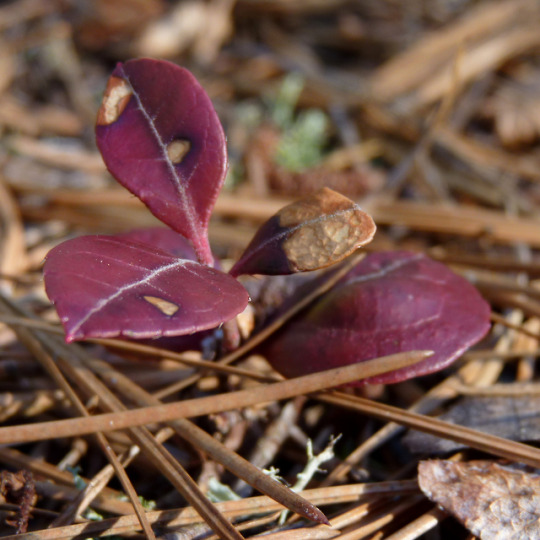
Eastern Teaberry, Gaultheria procumbens (by me)
#Eastern Teaberry#Gaultheria procumbens#Gaultheria#Ericaceae#Ericales#plants#Colliers Mills Wildlife Management Area#Colliers Mills WMA#New Jersey Pinelands#Pine Barrens#Ocean County#New Jersey#mine
7 notes
·
View notes
Text


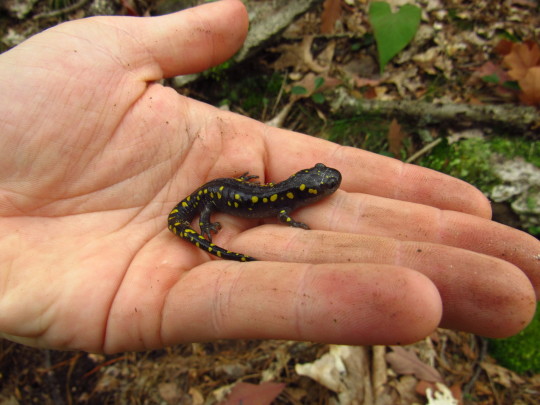
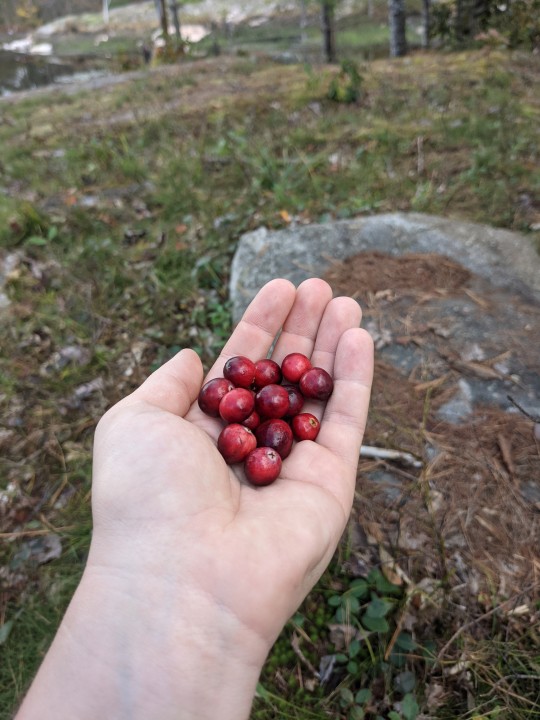


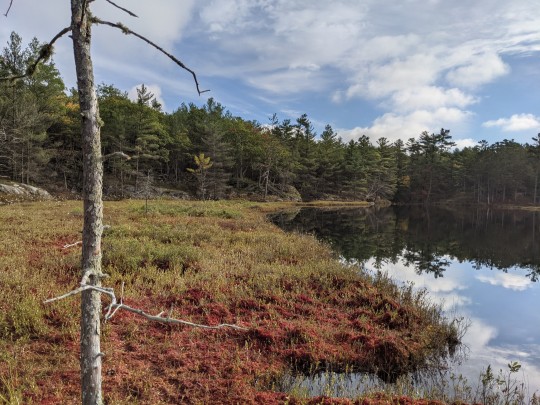
Spent the day on a field trip to some bogs, and it is the most fun I have had in a long time. Such a cool ecosystem, running around hunting for plants and herps on the funky red alien landscape which jiggled like a waterbed as you walked (and carried the fun risk of breaking through the floating mat of sphagnum moss and getting soaked despite wearing chest waders, as a handful of my peers did) was a blast.
Found a yellow spotted salamander for the first time, along with the more common eastern red-backed. Carnivorous plants were plentiful, with Sarracenia purpurea poking out of the moss all over, sundews in the margins of the bog, and bladderworts in the water.
Also ate some of the wild cranberries and teaberries for funsies.
13 notes
·
View notes
Text
Went outside to check which of my plants is emerging after their winter sleep/whether they made it.
So far the plants that have made it for sure are:
Allium cernuum (Nodding onion)
Allium schoenoprasum (Chives)
Anaphalis margaritacea (Pearly everlasting)
Amelanchier canadensis (Canadian serviceberry)
Aquilegia brevistyla (Smallflower columbine)
Aquilegia canadensis (Eastern red columbine)
Arctostaphylos uva-ursi (Common bearberry/Kinnikinnick)
Asarum canadense (Canada ginger)
Campanula rotundifolia (Harebell)
Echinacea purpurea (Purple coneflower)
Gaultheria procumbens (Eastern teaberry/American wintergreen)
Geum triflorum (Prairie smoke)
Hierochloe odorata (Vanilla grass/Sweetgrass)
Lindera benzoin (Spicebush)
Lonicera villosa (Mountain fly honeysuckle) both!
Monarda didyma (Scarlet bee-balm)
Monarda fistulosa (Wild bergamot)
Oenothera biennis (Evening primrose)
Prunus americana (American plum)
Prunus serotina (Black cherry)
Rhus aromatica (Fragrant sumac)
Rosa blanda (Smooth rose)
Rubus strigosus (American red raspberry)
Sambucus canadensis (Common elderberry/American black elderberry)
Silene acaulis (Moss campion)
Spiraea alba (White meadowsweet)
Urtica dioica (Stinging nettle)
Vaccinium angustifolium (Lowbush blueberry/Wild blueberry)
Vaccinium corymbosum (Northern highbush blueberry/Swamp blueberry)
Viola canadensis (Canada violet)
The plants that have probably/seem to have made it but I can’t quite tell yet (it’s still March after all):
Agastache foeniculum (Anise hyssop/Giant hyssop)
Allium ursinum (Wild garlic)
Asimina triloba (Pawpaw) I might not know until June for these...
Cercis canadensis (Redbud)
Helianthus nuttalli (Nuttall’s sunflower)
Helianthus pauciflorus (Stiff sunflower)
Myrica gale (Sweet gale)
Opuntia fragilis (Fragile prickly pear)
Viburnum cassinoides (Witherod viburnum)
Viburnum lentago (Nannyberry)
Viola blanda (Sweet white violet)
Zizia aurea (Golden alexanders)
The ones I have no idea about yet (again, it’s early):
Asclepias incarnata (Swamp milkweed)
Asclepias tuberosa (Butterflyweed)
Cerastium arvense (Field chickweed)
Erythronium americanum (Trout lily) I’ll know soon
Galium boreale (Northern bedstraw)
Geranium maculatum (Wild geranium)
Lilium michiganense (Michigan lily)
Mentha arvensis (Wild mint)
Mertensia paniculata (Tall bluebells)
Pycnanthemum tenuifolium (Slender mountain mint)
Symphyotrichum ciliolatum (Fringed blue aster)
Symphyotrichum lanceolatum (Panicled aster)
And the ones I think didn’t make it (hope I’m wrong) are:
Cornus canadensis (Bunchberry/Creeping dogwood) was doing fine but a squirrel dug it up a bad time...
Hibiscus moscheutos (Swamp rose mallow) was doing fine but people KEPT STEPPING ON IT THERE’S LITERALLY A SIDEWALK RIGHT BESIDE IT!!!
Pycnanthemum virginianum (Virginia mountain mint) WHO DECIDED THAT RAISED WINDOW BED SHOULD BE WHERE THE CIGARETTE BUTTS GO???
Solanum ptycanthum (Eastern black nightshade) They’re technically annuals/biennials, but hopefully it reseeded itself with the berries I didn’t eat.
So I can’t go to my old city to see my grandparents and friends. I can’t go to Quebec to see my sister, mom, nieces, and nephew. I can’t go to the parks because people have been gathering there so now there’s a fine. But I can still go to the ravine (I would LOVE to see people try to gather there; if the mud doesn’t get them, the thorns and pricklies will) and I still have my garden.
2 notes
·
View notes
Text
Who Likes Teaberry? Collected 56 Years Ago

This specimen of eastern teaberry (Gaultheria procumbens), also called American wintergreen, was collected on July 12, 1963 by Leroy Henry (Carnegie Museum Curator of Botany at the time) and Dean Ross in a cranberry bog in Somerset county, Pennsylvania.
It is perhaps best known by many as a unique wintergreen flavor of chewing gum and ice cream, especially in Pennsylvania. Atlas Obscura says Teaberry ice cream: “sometimes looks like Pepto-Bismol and smells like Bengay.” Penn State Berkey Creamery calls it the “best treat of a bygone era.”
Teaberry is in the heath (blueberry) family, Ericaceae. It is a small shrub growing along the ground, found across the Eastern US and has distinctive evergreen leaves.
Find a high resolution image of this teaberry specimen (and more) online at midatlanticherbaria.org.
Check back for more! Botanists at the Carnegie Museum of Natural History share digital specimens from the herbarium on dates they were collected. They have embarked on a three-year project to digitize nearly 190,000 plant specimens collected in the region, making images and other data publicly available online. This effort is part of the Mid-Atlantic Megalopolis Project (mamdigitization.org), a network of thirteen herbaria spanning the densely populated urban corridor from Washington, D.C. to New York City to achieve a greater understanding of our urban areas, including the unique industrial and environmental history of the greater Pittsburgh region. This project is made possible by the National Science Foundation under grant no. 1801022.
Mason Heberling is Assistant Curator of Botany at the Carnegie Museum of Natural History. Museum employees are encouraged to blog about their unique experiences and knowledge gained from working at the museum.
#Carnegie Museum of Natural History#Botany#Collected On This Day#Mason Heberling#Teaberry#Ice Cream#Chewing Gum#Wintergreen
31 notes
·
View notes
Photo

Wintergreen Gaultheria procumbens … Or eastern teaberry, is a species of Gaultheria native to northeastern North America,👋 It is a member of the Ericaceae plant family. 🖤 . The wintergreen energetics gives you self-confidence and makes you aware of the fact that you have much more qualities in you than you show. . Wintergreen assists in releasing patterns of family and personal karma at a spiritual level. Use it to help you relax and release during spiritual healing sessions and regression therapy. . Wintergreen helps you release repetitive negative thoughts, mental conflict. . Wintergreen relieves inflammation, pain, and all types of aches, including some of the symptoms of arthritis and rheumatism. Wintergreen is warming and improves circulation. . Therapeutic properties: analgesic, antibacterial, anti-inflammatory, antirheumatic, antiseptic, antispasmodic, antitussive, astringent, carminative, decongestant, diuretic, emmenagogic, galactagogic, hemostatic, hypotensor, rubefacient, stimulative, tonic, vulnerary . Not to be used during pregnancy . Add a couple of leaves to your herbal tea 🫖 . Wintergreen as a Flower essence… It cleanses past-life negativity from the aura. It stimulates data from the higher self and aura cleansing through dreams. This may be in many symbolic dreams, but not negative ones. It opens the crown chakra; and the astral, spiritual, and soul bodies are enhanced. . . #plant #finds #ghostly #native #plantspecies #in #novascotia #walks #forager #phytonutrients #wintergreen #beauty #of #the #seasons #changing #coastalliving #eastcoast #parkscanada #novascotia #creative #teaberry #whiteflowers #nature #love #energetics #point #pleasant #park #local https://www.instagram.com/p/CSVV74Mn0sk/?utm_medium=tumblr
#plant#finds#ghostly#native#plantspecies#in#novascotia#walks#forager#phytonutrients#wintergreen#beauty#of#the#seasons#changing#coastalliving#eastcoast#parkscanada#creative#teaberry#whiteflowers#nature#love#energetics#point#pleasant#park#local
0 notes
Photo




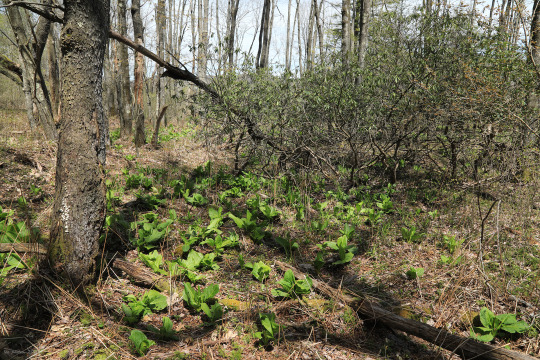
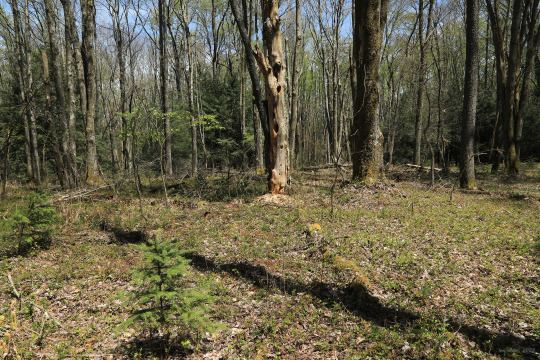


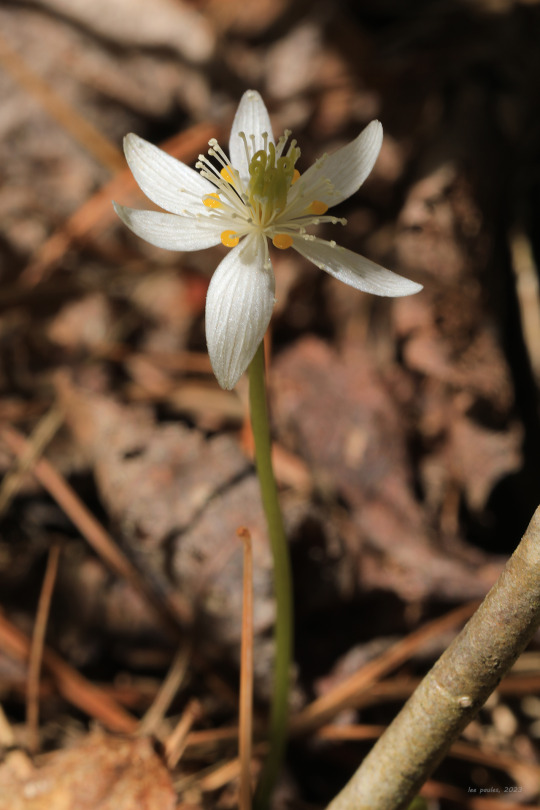
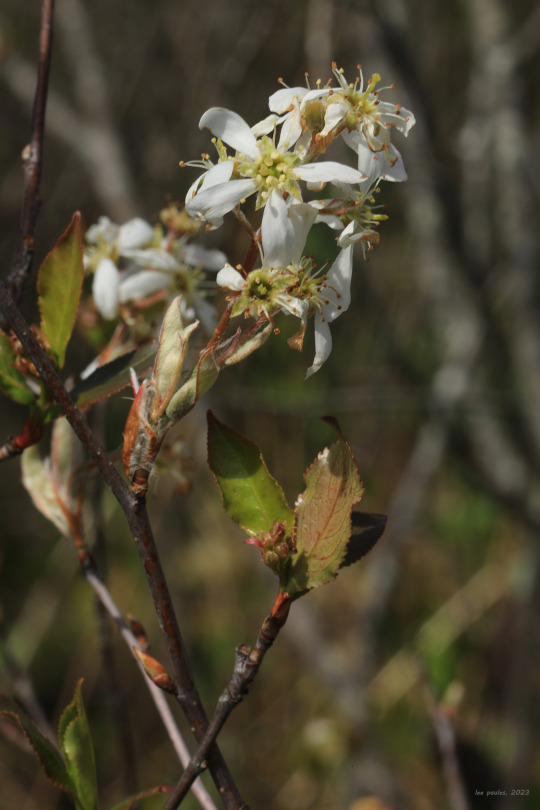
Winter made an encore appearance to the Central Appalachians this past week, with some locations above 3000 feet receiving a foot or more of snow. By Friday, all that nasty cold and freezing precipitation had moved out and spring returned with a vengeance today, with temperatures in the upper sixties to low seventies. It was a perfect day to explore the ancient sphagnum bog at Cranesville Swamp Preserve, whose boreal wetlands community owes its existence to the cool temperatures provided by the frost pocket in which it nestles. From top: small cranberry (Vaccinium oxycoccos) and eastern teaberry (Gaultheria procumbens) grow from a sphagnum hummock; lowbush blueberry (Vaccinium angustifolium); eastern skunk cabbage (Symplocarpus foetidus) growing in a damp spot near the bog’s edge; fringed polygala (Polygaloides paucifolia); dwarf ginseng (Panax trifolius); goldthread (Coptis trifolia); and downy serviceberry (Amelanchier arborea).
#appalachia#vandalia#west virginia#maryland#spring#may#allegheny mountains#bog#peat bog#shagnum#cranesville swamp#cranesville swamp preserve#small cranberry#eastern teaberry#lowbush blueberry#eastern skunk cabbage#fringed polygala#dwarf ginseng#goldthread#downy serviceberry#flora#wildflowers
97 notes
·
View notes
Text
鉢植え:チェッカーベリー(ゴールテリア・プロクンベンス)
チェッカーベリーと呼ばれる北米原産のゴールテリア・プロクンベンス。
赤い実がこの時���には欠かせません。
鉢植えの写真
鉢植えの素材
ゴールテリア・プロクンベンス
ヒメコウジ(姫柑子、オオミコウジ、大実柑子、Gaultheria procumbens、eastern teaberry、checkerberry、boxberry、American wintergreen)はツツジ科シラタマノキ属の植物。
北アメリカ東北部原産でニューファンドランド島からマニトバ州南東部、南はアラバマ州まで広がる。
ウィキペディア
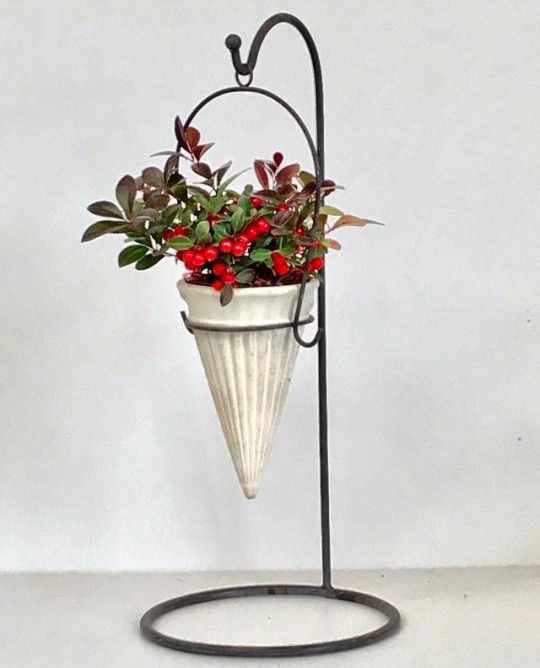
View On WordPress
0 notes
Photo

Eastern Teaberry. Botanical name: Gaultheria procumbens. Here at camp in Maine they are common. Also known as Wintergreen and used for tea and scent. #Teaberry #Wintergreen #MaineCamp #Maine #AutumnCamp #FinestKind #AutumnFlora #FallFlora #CampPlants https://www.instagram.com/p/CGgV1qSHups/?igshid=12v4m1fufz24
0 notes
Photo
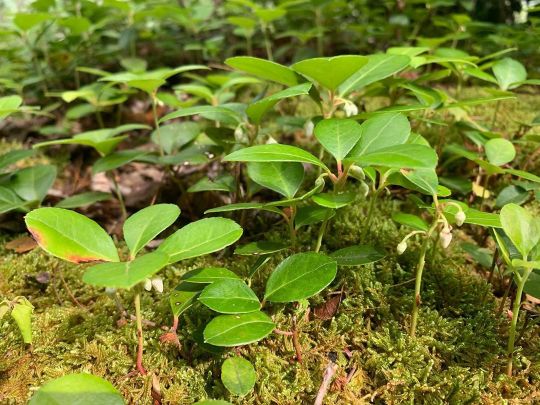
The flora of West Virginia and the micro landscapes they love. Identification in order (or at least, my best guess): 1. Eastern teaberry (gaultheria procumbens) 2. Black cohosh (Actaea racemosa) 3. Yellow jewelweed, part of the touch-me-not family (impatiens pallida) 4. People flowered raspberry (rubus odoratus) 5. Tall bellflower (campanulastrum americanum) 6. Orange jewelweed (impatiens capensis) 7. Common milkweed (Asclepius striaca) 8. I think these are cinnamon ferns (osmundastrum cinnamomeum) or closely related, they grow quiet large 9. The high plateau of the Dolly Sods Wilderness 10. Natural wetlands spring in the Canaan valley . . . #flora #wilderness #wildernessculture #wildernessnation #wildernessexplorer #travel #travelphotography #travelgram #hike #hiking #hikersofinstagram #hikemoreworryless #trail #trails #trailrunning #run #running #runnersofinstagram #nofilter (at Harman, West Virginia) https://www.instagram.com/p/CDMXg0vlAvE/?igshid=1n1boqtomlx48
#flora#wilderness#wildernessculture#wildernessnation#wildernessexplorer#travel#travelphotography#travelgram#hike#hiking#hikersofinstagram#hikemoreworryless#trail#trails#trailrunning#run#running#runnersofinstagram#nofilter
0 notes
Photo



The eastern teaberry, the checkerberry, the boxberry, or the American wintergreen (Gaultheria procumbens). A species of Gaultheria native to northeastern North America from Newfoundland west to southeastern Manitoba, and south to Alabama. It is a member of the Ericaceae (heath family).
108 notes
·
View notes
Photo
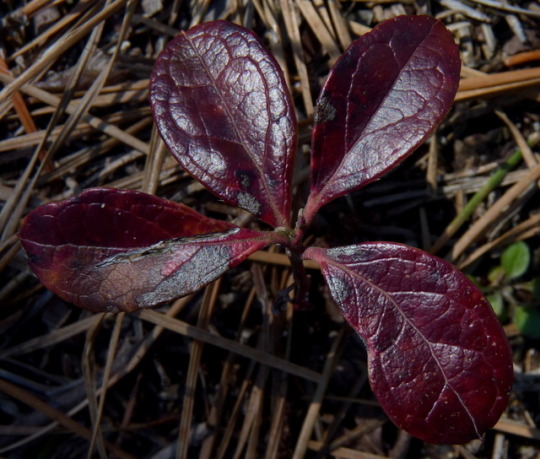
Eastern Teaberry or American Wintergreen, Gaultheria procumbens (by me)
#Eastern Teaberry#American Wintergreen#Gaultheria procumbens#Gaultheria#Ericaceae#Ericales#leaves#plants#spring#New Jersey Pinelands#Pine Barrens#Double Trouble State Park#Ocean County#New Jersey#mine
19 notes
·
View notes